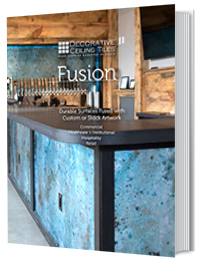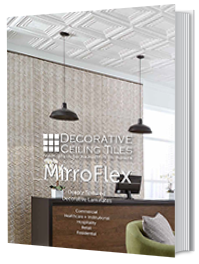How to Remove Shower Wall Panels Safely
Written by Milan Jara on 7th Oct 2022

Wondering how to remove shower wall panels safely? We teach you what is needed to remove glue-up and direct-to-stud wall panel applications.
Common wall paneling choices for home improvement projects are fiberglass and acrylic because they are simple to install. However, as easy as they are to put into a bathroom, they are challenging to remove without damaging the wall. We will instruct you on removing shower wall panels for glue-up and direct-to-stud wall panels.
Damage to the walls can range from tearing drywall paper while removing a glue-up panel to removing some of the walls when attempting to remove a direct-to-stud panel. To remove these, you will need to expose a nail flange. You cannot accomplish this without removing part of the wall.
For tiled walls, you will need to remove a minimum of one row along the side and top edge of a surround.
Things to Consider When Removing Panels

You need to remove the panels in the same order as they were installed because there can be overlapping material in the corners if you installed the tub panel first. The installation sequence of a multi-piece shower wall panel tends to begin at the back wall, then the two sides. The last piece will be at the corners if it is a five-piece set.
Removing the Walls (Multi-Piece Sets)
If applicable, remove the corners, then go to the side walls. End by removing the back walls. Several multi-piece sets contain interlocking joints found at the corners. Check this before beginning to remove the panels, as they will need to be disconnected before the panels are removed.
Removing the Walls (Single-Piece)

Single-piece shower surrounds pose a different challenge as they tend to be so large that removal from a shower enclosure and bathroom in a single piece is often impractical. Since you won’t be able to reuse most of it, things can be made easier by cutting it into pieces before removing it. The best way to accomplish this is by using an angle grinder or oscillating tool.
Oscillating tools are ideal for cutting drywall. You will require protective gloves and goggles to remove the surround.
You will not need to turn off the water to remove the surround, but it can be a good idea to do it anyway. Removing the faucet trim, showerhead, tub spout, and shower arm is necessary. Once you remove the set screw, the shower handle should quickly come off. If you can’t locate the screw, search for it behind a cap that you can easily pry off.
How to Remove Shower Wall Panels Safely (Glue-Up Panels)
Methods for removing a glue-up shower panel are not as tricky as direct-to-stud paneling. It will require fewer tools, and you can do it much quicker. Panels are easier to remove if the front of each one is heated using a hair dryer to soften the adhesive used. However, be advised it will also turn into a gooey mess.
We recommend first attempting to remove the panels before applying heat and only using the hair dryer if necessary.
You will need the following tools:
- Stiff putty knife
- Rag
- Tongue and groove pliers
- Utility knife
Steps for a Safe Removal
- Remove Plumbing Trim. Unscrew and remove the faucet handle, showerhead, tub spout, and shower arm. Cut the caulk around the escutcheons or plate using a utility knife to make removal easier. If you have a tongue and groove plier, you can use it to remove the showerhead, spout, or shower arm. To do this, cover the fixture first with a rag to prevent damaging the finish.
- Cut Sealant Around the Surround. Use the utility knife to cut through the caulk around the sides of the panels, including where the panels intersect at the tub or shower base rim. If there are several panels, you may see a caulk seal where corner panels overlap the back and side panels. Remember to cut those too.
- Pry Off Molding. Tap your stiff putty knife behind the molding installed on the outer perimeter of the surround. Using a putty knife, pry it away for removal.
- Eliminate Corner Panels. If applicable, begin at the top outside corner. Tap your putty knife behind one of the corner panels, then pry out a corner. Tap the putty knife deeper until you pull back the panel enough that you can grasp the panel’s edge with either the pliers or your fingers. Tap and pull the panels until they come off. Once accomplished, move to the next corner panel.
- Remove End Panels. Beginning with the top outside corner, tap your putty knife under an end panel. Pry it out until you can grip it. Pull and tap until you can remove the panel. Using the same method, you can remove the panels at the end of your shower enclosure.
- Remove Back Panels. Using the same method, you can remove the back panel. Once removed, there may be some repairs needed, including cleaning up the glue residue and fixing any tears to prepare the wall for the new shower wall.
How to Remove Direct-to-Stud Panels
After removing the shower faucet trim, removing the wall panels begins with uncovering nailing flanges surrounding the perimeter of the panels, providing access to fasteners holding panels to your studs. It is easier to do this systemically as it will minimize any repairs necessary to the walls.
You will need:
- Pencil
- 4’ level
- Oscillating tool
- Flat bar
- Hammer
- Utility knife
- Cat’s paw
- Drill
- Screw bit
- Mason chisel
Steps for Removal
- Draw Cut Line. Draw a level line on your drywall above your shower enclosure using a pencil and 4’ level. This line should be made 6” from your enclosure to allow adequate room to work. Draw vertical lines on the side walls of your enclosure if the wall extends over 6” past the panels. Otherwise, removing your entire wall covering, including the vertical panel edges, will be easier.
For tiled walls, remove one to two rows of tiles around the perimeter of your panel set, depending on the tile size. Use a mason chisel and hammer for removal. Chip into the grout line above the row you’re removing, then angle your chisel into the tile. Then, you can tap it for free. Once you remove the first tile, the rest will be easier.
- Cut Along Your Line, Then Expose Nail Flanges. Using an oscillating tool, create a clean cut along your line. Chip it out and remove the drywall between your line and the panels using a flat bar and hammer. For a tiled wall, cut through a tile backer or cement board along the tile’s edge. Pry out cut pieces to expose your studs.
- Unfasten Panels from Studs. Panels are held using roofing nails or screws. Use a screw bit and drill to back out the screws. For nails, use a cat’s paw pry bar. To remove them, tap the claws behind the nail’s head. Level a pry bar against the stud to remove the head.
- Cut Sealant. Cut the caulking that seals the panels to your shower pan or tub rim with a utility knife. For a multi-panel set, cut caulk, sealing your panels together.
- Remove Panels. Remove your panels in the reverse order that they were installed. Begin with corners, move to sides, and finish with the back panels. Side and corner panels could be connected using a latch system. You can unlatch them by lifting the panel straight up until it is free.
Conclusion
When removing shower wall panels, you must first determine whether it is a multi-piece installation. Then, you will need to decide whether they are glued up or direct-to-stud. These factors will affect what you need to remove these tiles from your walls safely.




